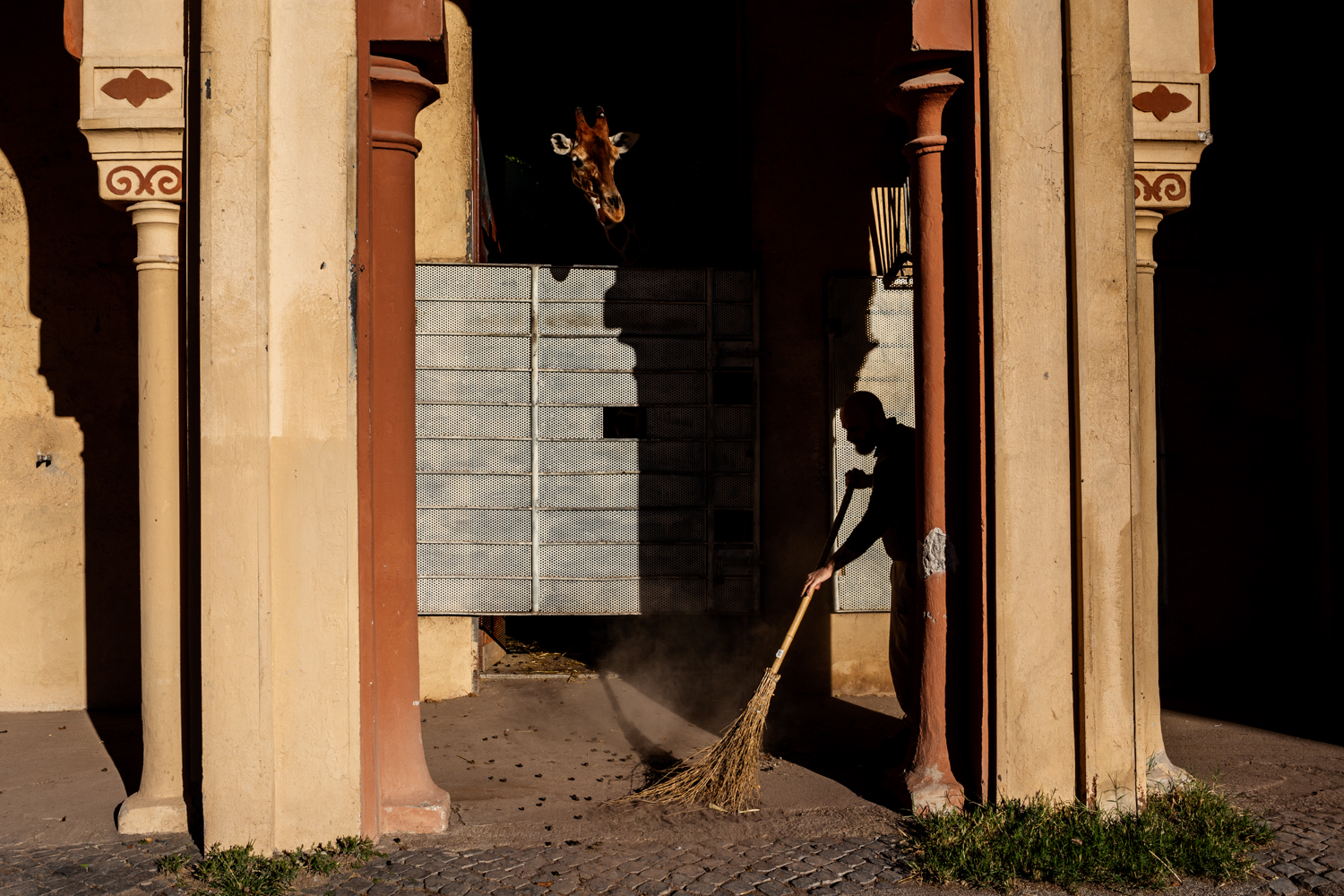
Notes on “The Hidden Zoo”
Why look at animals? This question, famously posed by John Berger’s 1977 essay, maintains its relevance today. In this contribution, photographer Dario Li Gioi considers Berger’s question to reflect upon the shooting of a project entitled “The Hidden Zoo”, dedicated to the exploration of Rome’s bio-park. Here, photography becomes the very, almost paradoxical medium to protest the disappearance of animals the moment in which, all around us, they are transforming into images.
It’s curious. I knew I was entering a space arranged specifically for observation; yet, when I think back to my first impressions of the zoo, on that day in January 2019, the heightening of my other senses is what comes to mind. The biopark welcomed me with its peculiar phonosphere: mysterious mutterings, scattered cries and thumps of unknown origins alternated with long intervals of silence. And then there were the odours, such as the acrid smell of the camel stables that hits you as soon as you arrive. The zoo, a site where the borders between humans and animals touch, had shut out the external world behind me.
As soon as we enter this non-place, its fiction is evident from the very outset. Technically, I was told, the space given to the animals is the minimum area necessary to ensure their wellbeing. Yet, it remains a heavily man-made space. The discrepancy between our expectations – the idea of encountering a fresco of nature, however imperfect or partial and the reality of the anthropic intervention – is perhaps one of the most striking features. If it fails to leave us, it is precisely because that fiction is part of the spectacle.
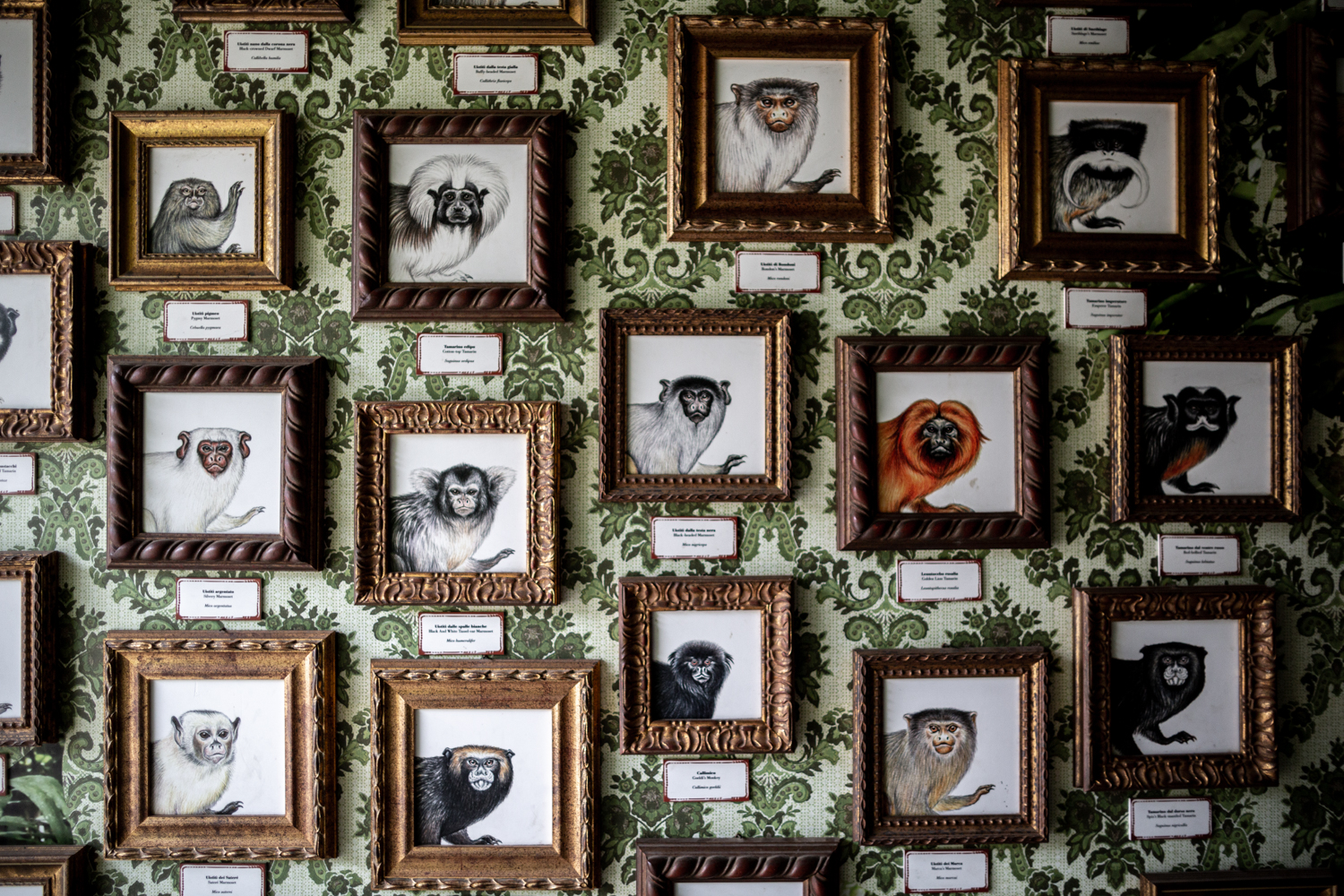
Rome, Italy. April 2019. Details of the small primate species in an area dedicated to them.
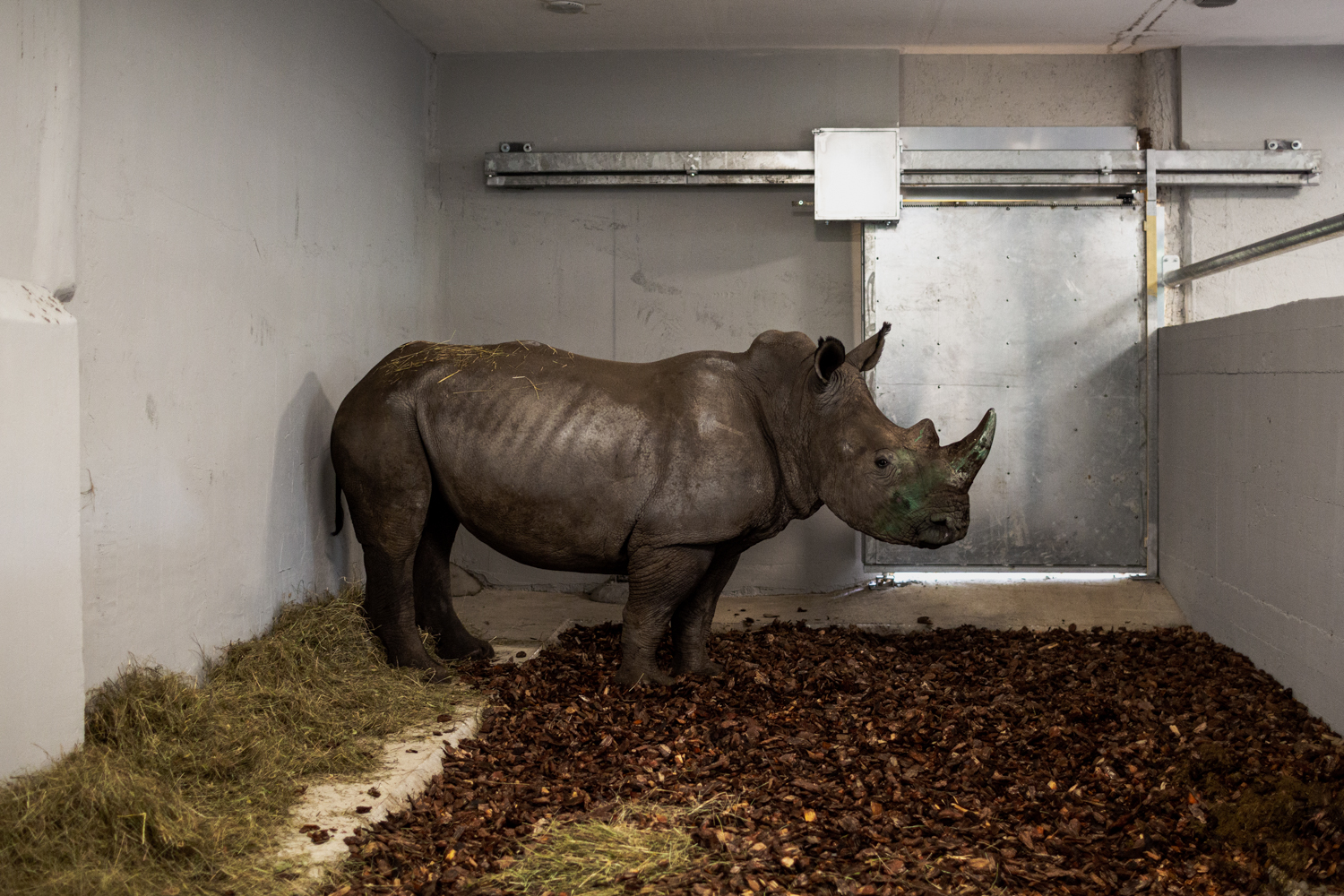
Rome, Italy. 18 September 2019. In the stable, white rhino Kibo, shortly after arriving in Italy from the Netherlands after a 48-hour journey. White rhinos are one of the most endangered species due to poaching. The biopark has launched a series of fundraising and awareness-raising initiatives to protect white rhinos from extinction. The photograph was taken during the daily activities of the biopark without any staging.
In two important essays, Why We Look at Animals and The Theatre of the Apes, John Berger challenges the cliché that animals are aware of our gaze. As the author says, when animals look towards us, their eyes are those of a watchful and wary being. It is easy to think that that gaze is reserved for humans only – that look leads us to think that they recognise us. But, Berger remarks, ‘that same animal may well look at another species in the same way. It does not reserve a special gaze for man’.1
This belief, this interpretation of the gaze of animals in a way that positions the human at the centre, makes us feel like everything is in place so that the marginality of animals comes naturally. But we have simply imposed marginality on animals – just as we have decided that nature is ours to exploit as we see fit, so do we believe that animals have almost willingly accepted living on the fringe.
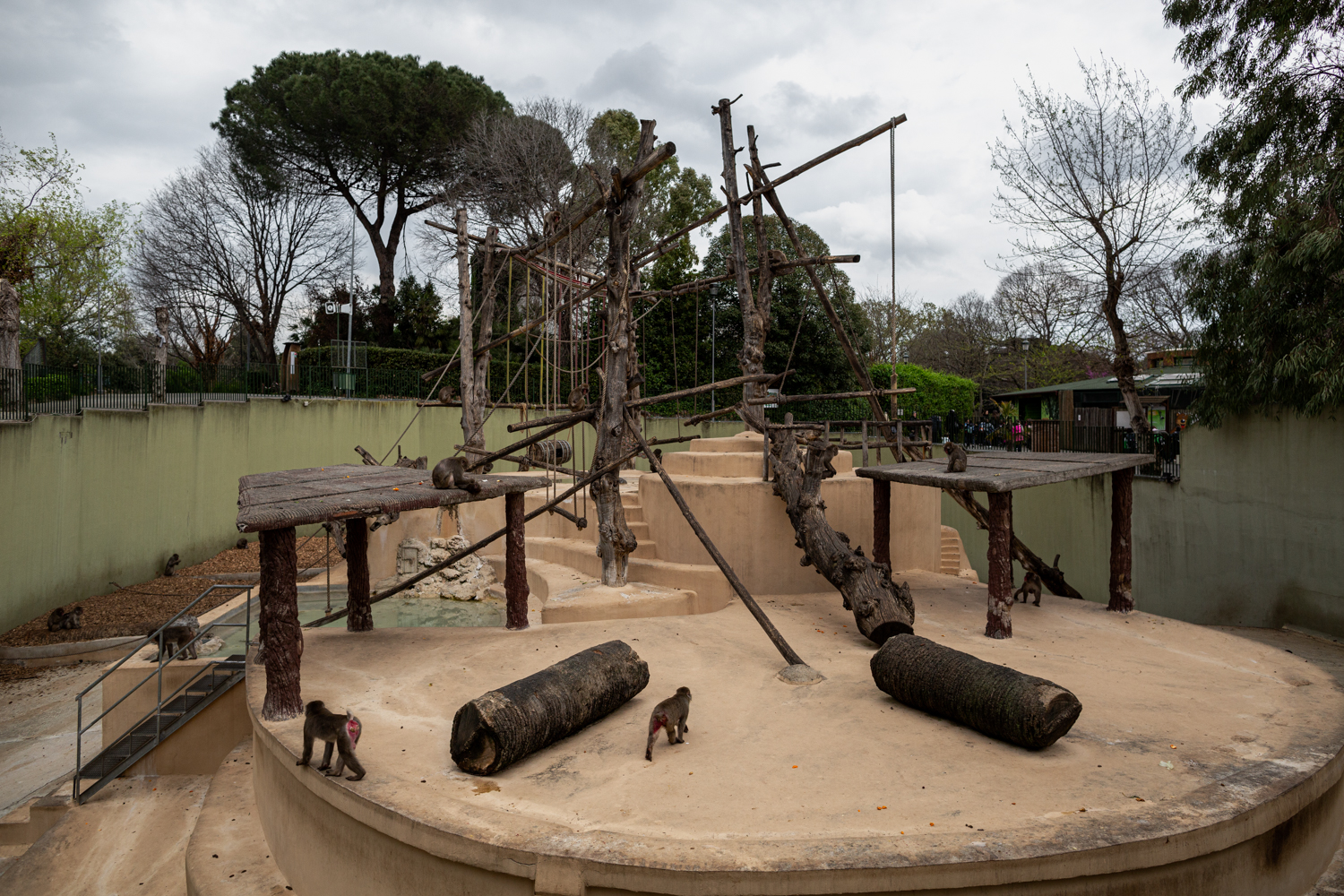
Rome, Italy, April 3, 2019. The Japanese macaque village shortly after its opening. This colony of primates consists of 64 specimens, representing one of the largest in the Rome biopark. The zoo is home to around 200 species of mammals, birds, reptiles and amphibians. The photograph was taken during the daily activities of the zoo without any staging.
Another point of analysis that Berger makes, which has accompanied my reflections, is the man-animal relationship throughout history. Berger begins from centuries ago, analysing the symbolic, mythological, positive role of the animal, reaching the marginality of animals as a result of the Industrial Revolution. Animals, that first circle that once surrounded men, have started to disappear everywhere. The zoo embodies this marginality. Yet, at the same time, the zoo is a real Noah’s ark that symbolically represents not only salvation but also, paradoxically, the end of the world. Or perhaps, it is a glimpse of a new world, not necessarily better or worse than the one that preceded it. Or maybe it is just, as Berger says, ‘a living monument’ to the disappearance of animals.2
Having been born and raised in captivity, or rescued from critical conditions, the zoo animals have no knowledge of their real habitat. Their behaviour resembles that of actors. They know by instinct and habit that an audience is waiting for them outside and they accept its presence as a constituent element of their habitat. It is only behind the scenes that their wild behaviour seems to return. The same chimpanzees who, when encountered in the visitor area seem to act as if they were on a theatre stage, greeted me backstage with cries of protest since they saw me as an intruder. This is completely normal: it is behaviour adapted to captivity. The orangutan or the monkey watching us, then, is actually a short circuit. The zoo creates the illusion that they are watching us and that they are really interacting. But who is watching who?
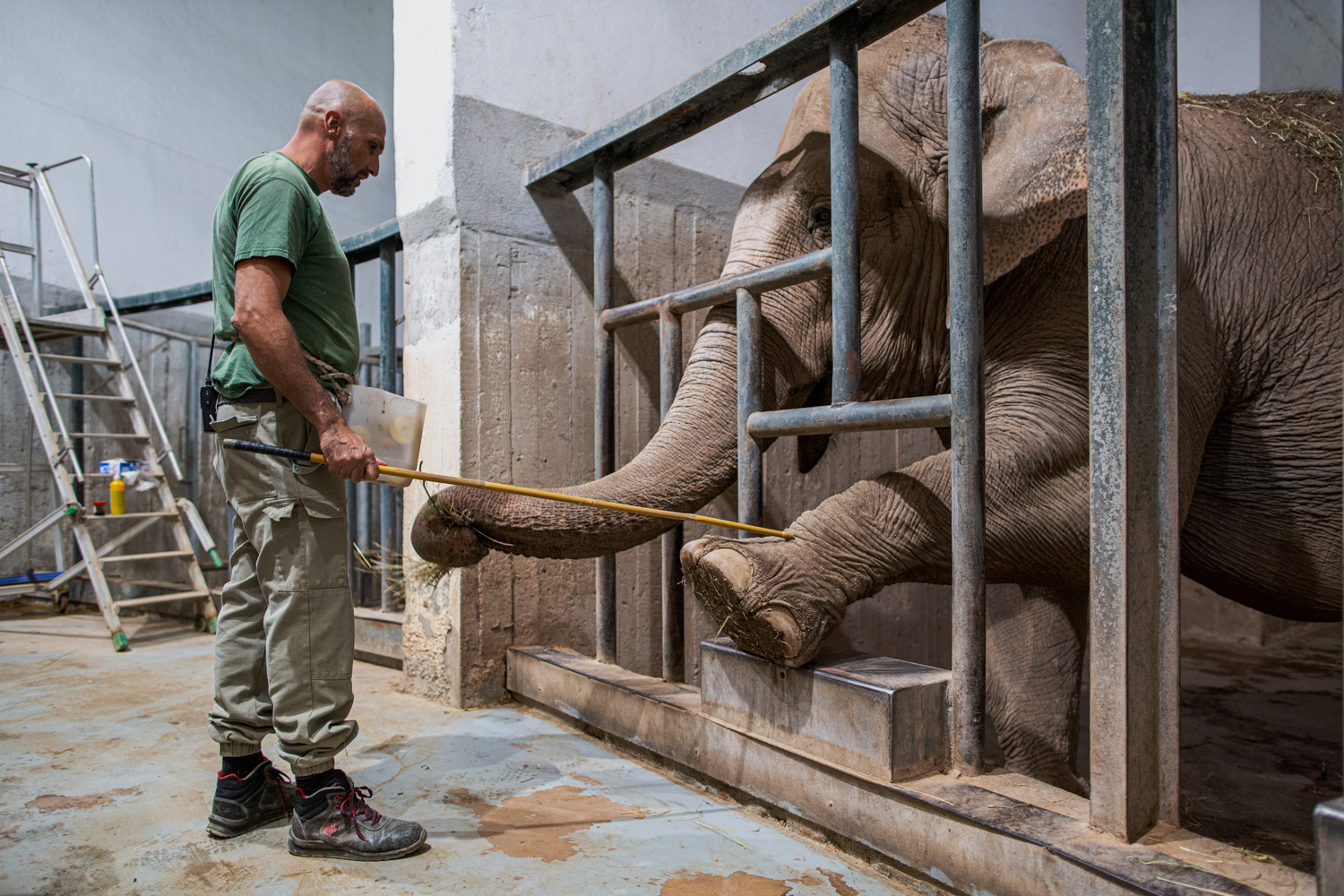
Rome, Italy. 17 October 2019. The keeper in charge of the pachyderm area during a training session with Sofia, the Asian elephantess donated by the Indian government in 1972 to the Rome Zoo. The captive elephant, according to studies by the staff, is the only animal whose life expectancy decreases. The photograph was taken during the daily activities of the Bioparco without any staging.
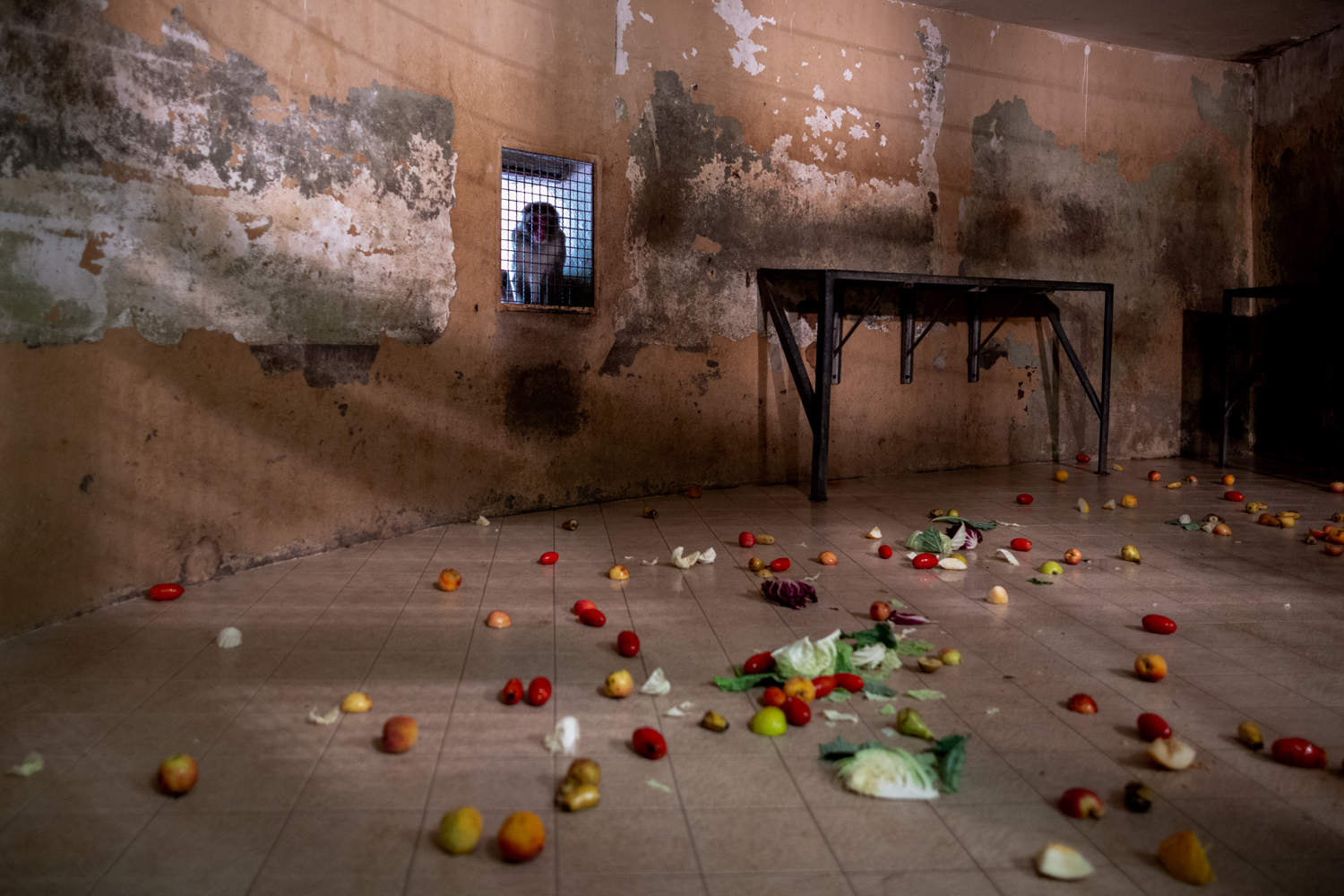
Rome, Italy. 01 October, 2019. A macaque watches the food in the barn from the window of the outdoor area. The first meal is served inside. At dusk, the animals return to the stables. In the future, the idea is to leave the inside open to allow the animals to enter or exit freely. The photograph was taken during the daily activities of the biopark without any staging.
The many European zoos of the 19th century fully reflect this attitude of domination. Man has anthropomorphised the animal areas with elements not present in their real habitats, demonstrating once again that he subordinates the animal world. In fact, Rome’s zoo is of 19th-century architectural design, so the fiction is more evident than in other zoos, such as Valencia.
And then there are the visitors. The public experiences the zoo as a Disney-like place. Although the biopark calls itself an outpost for the preservation of the species, for many of the visitors, the spectacular effect is what remains. In the age of the selfie, what matters most is taking a photo with the orangutans, for example, and posting it on Instagram as a trophy. Yet, this started long before selfies – photos of children at the zoo have long been an essential feature of the family album. Since I was a child not much has changed, even with today’s more environmentally focused agenda.

Rome, Italy. 07 November 2019. Inside the Biopark clinic, veterinarian Klaus Friederich is about to sterilise a female Japanese macaque who, for the third time, has abandoned her cubs after giving birth. It is not uncommon in captivity – especially primates born in captivity – to abandon their young, which is why sterilisation is carried out. The photograph was taken during daily activities at the biopark without any staging.
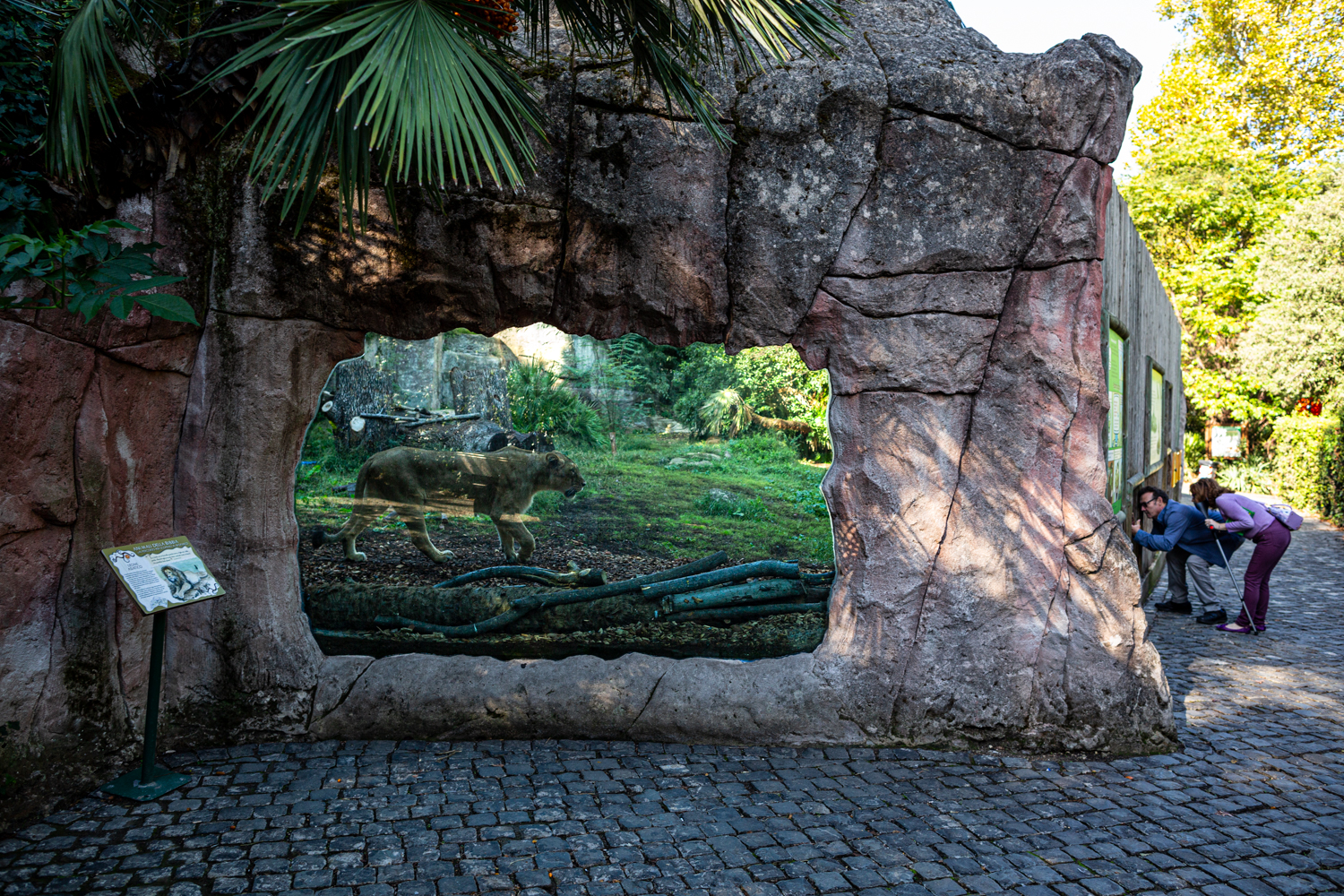
Rome, Italy. October, 2019. Two visitors observe the lioness inside the exhibit. The zoo is estimated to be visited by more than 500,000 people a year, compared to one million in Vienna and Berlin. All this before the pandemic.
Today, with the rise of corporate capitalism, where sprawling cities and the commercial exploitation of animals have confined them into a world that is more ours and theirs, returning only in the form of surrogates – faded and docile copies of those in wild habitats. It feels like, as Berger says, animals are nowhere to be seen, except as images. As you move through the exhibits, through the paths of the zoo, this separation is clear: the spaces are designed for people to observe, not for animals, which are ultimately on the fringe. Space is divided into categories. Humans believe they are interacting with animals, but at max, the animals are simply aware of their presence while, beyond the walls of the zoo, the extinction process continues.
Interestingly, the only gaze that is truly returned is that of the keepers. The keepers are one of the most fascinating, liveliest parts of the zoo, perhaps because only they have a true relationship with the animals. Paradoxically, the keepers challenge those images of animals that have contributed to their captivity. They adore the animals and the animals recognise them. Their voice – here is the phonosphere again – is what animals recognise and it calms them. I owe a lot to the keepers, to my guide Fabio, who allowed me to enter that world as if I were one of them.
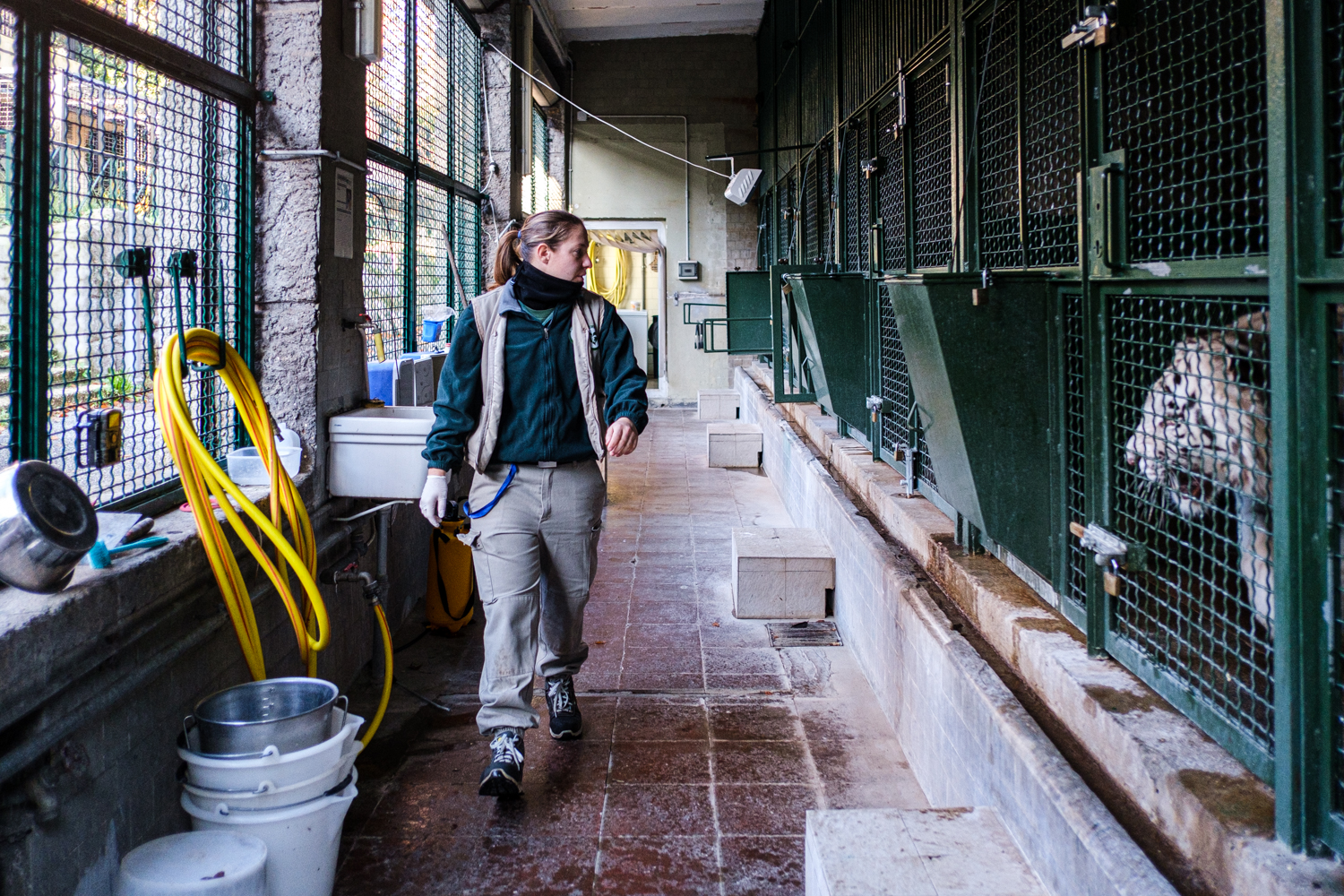
Rome, Italy. October 2019. Giulia is one of the keepers of the carnivore area. The first meal is given at 08.30 in the stables, at the back of the exhibits. Inside the barn, Gladio Bengal Tiger, rescued a few years ago from a private breeding farm.
All images by Dario Li Gioi
Recent articles

Southern California is many things. Quite infamously, it is known as a landscape defined by the automobile, from the emergence and diffusion of the highway system to fast food burgers, and the suburbanization of the United States. Walking this place then, would seem not only inconvenient, but ill advised. In… Read more »

What is today known as ‘whistleblowing’ could once take the form of interacting with a threatening gaze carved into the city wall. It is the case of the ‘boche de Leon’ or ‘lion’s mouths’ disseminated by the old Venetian Republic throughout its territory to suppress illegal activities. Through a close… Read more »

As he navigates through the recurrent lockdowns of the pandemic, stranded between hitchiking and muggings, job hunting and separations, Fabio Valerio Tibollo rediscovers photography as a powerful coping mechanism. Recording everything that happened around him for one year straight, from attending momentous events to finding curiosity in shots of simple living,… Read more »

